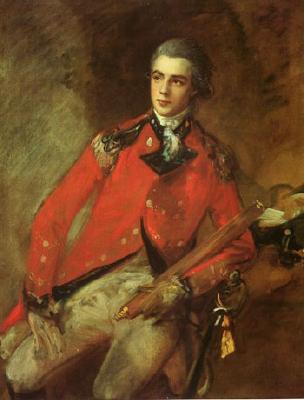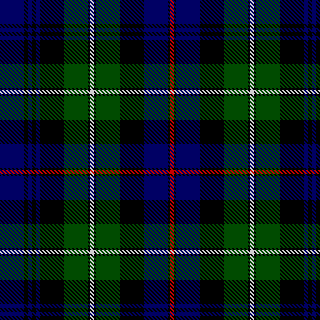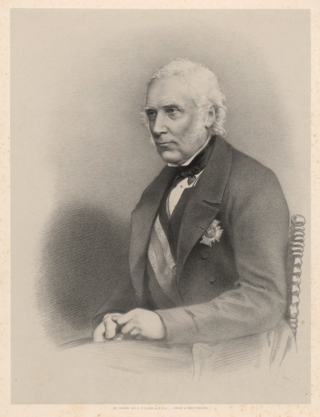Related Research Articles

The British Army is the principal land warfare force of the United Kingdom, a part of the British Armed Forces along with the Royal Navy and the Royal Air Force. As of 1 January 2023, the British Army comprises 78,060 regular full-time personnel, 4,060 Gurkhas, 27,570 volunteer reserve personnel, and 4,520 "other personnel", for a total of 114,210.

Thomas Burgess was an English author, philosopher, Bishop of St Davids and Bishop of Salisbury, who was greatly influential in the development of the Church in Wales. He founded St David's College, Lampeter, was a founding member of the Odiham Agricultural Society, helped establish the Royal Veterinary College in London, and was the first president of the Royal Society of Literature.

Sebastião José de Carvalho e Melo, 1st Marquis of Pombal and 1st Count of Oeiras, known as the Marquis of Pombal, was a Portuguese statesman and diplomat who effectively ruled the Portuguese Empire from 1750 to 1777 as chief minister to King Joseph I. A liberal reformer influenced by the Age of Enlightenment, Pombal led Portugal's recovery from the 1755 Lisbon earthquake and modernized the kingdom's administrative, economic, and ecclesiastical institutions. During his lengthy ministerial career, Pombal accumulated and exercised autocratic power.

General William Schaw Cathcart, 1st Earl Cathcart was a British soldier and diplomat.

The Commander-in-Chief of the Forces, later Commander-in-Chief, British Army, or just the Commander-in-Chief (C-in-C), was (intermittently) the professional head of the English Army from 1660 to 1707 and of the British Army from 1707 until 1904. In 1904 the office was replaced with the creation of the Army Council and the appointment of Chief of the General Staff.
Major-General William Roy was a Scottish military engineer, surveyor, and antiquarian. He was an innovator who applied new scientific discoveries and newly emerging technologies to the accurate geodetic mapping of Great Britain. His masterpiece is usually referred to as Roy's Map of Scotland.
The hackle is a clipped plume or short spray of coloured feathers that is attached to a military headdress, with different colours being associated with particular regiments.

The Royal Highland Fusiliers, 2nd Battalion, The Royal Regiment of Scotland is an infantry battalion of the Royal Regiment of Scotland.

In rudimental drumming, a form of percussion music, a drum rudiment is one of a number of relatively small patterns which form the foundation for more extended and complex drumming patterns. The term "drum rudiment" is most closely associated with various forms of field drumming, where the snare drum plays a prominent role. In this context "rudiment" means not only "basic", but also fundamental. This tradition of drumming originates in military drumming and it is a central component of martial music.
Commander-in-Chief, Ireland, was title of the commander of the British forces in Ireland before 1922. Until the Act of Union in 1800, the position involved command of the distinct Irish Army of the Kingdom of Ireland.
The Army School of Bagpipe Music and Highland Drumming is a British Army training establishment that provides instruction on Scottish pipe band music to military pipers and drummers.

The Royal Regiment of Scotland is the senior and only Scottish line infantry regiment of the British Army Infantry. It consists of three regular and two reserve battalions, plus an incremental company, each formerly an individual regiment. However, three regular battalions maintain their former regimental pipes and drums to carry on the traditions of their antecedent regiments.

The Scots Guards (SG) is one of the five Foot Guards regiments of the British Army. Its origins are as the personal bodyguard of King Charles I of England and Scotland. Its lineage can be traced back to 1642, although it was only placed on the English Establishment in 1686.

Major General Sir William Reid was a Scottish military engineer, administrator and meteorologist. He was Governor of the Bermudas (1839–1846), of the British Windward Islands (1846–1848), and of Malta (1851–1858). Reid founded the Bermuda National Library in 1839.

The English Army existed while England was an independent state and was at war with other states, but it was not until the Interregnum and the New Model Army that England acquired a peacetime professional standing army. At the Restoration of the monarchy, Charles II kept a small standing army, formed from elements of the Royalist army in exile and elements of the New Model Army, from which the most senior regular regiments of today's British Army can trace their antecedence. Likewise, Royal Marines can trace their origins back to the formation of the English Army's "Duke of York and Albany's maritime regiment of Foot" at the grounds of the Honourable Artillery Company on 28 October 1664.

The Horse Grenadier Guards, usually referred to as Horse Grenadiers, were a series of cavalry troops in the British Household Cavalry between 1687 and 1788, who used grenades and other explosives in battle. Originally attached to the Horse Guards, they became independent for a century before being disbanded. However, the men of the troops formed the basis of the new troops of Life Guards.

A Corps of Drums, sometimes known as a Fife and Drum Corps, Fifes and Drums or simply Drums is a unit of several nation's armies. Drummers were originally established in European armies to act as signallers. The major historical distinction between a military band and a corps of drums is that 'drummers' were not employed to play their instruments to entertain or delight, but instead to carry out a utilitarian battlefield role. This role was fulfilled by trumpeters or buglers in the cavalry and the artillery, who did not form into comparative formed bodies in the way that drummers did; therefore, an orthodox corps of drums will exist in the infantry arm.
1st American Regiment, also known as Jackson's Continental Regiment of 1783–1784, was the last unit in the Continental Army, retained after the close of the American Revolutionary War. This regiment, under the command of Colonel Henry Jackson of Massachusetts, was not the same unit as Jackson's Additional Continental Regiment of 1777, which had become the 16th Massachusetts Regiment in 1780 and had been disbanded in 1781. Equally, this regiment should not be confused with the First American Regiment of 1784–1791, which was originally commanded by Colonel Josiah Harmar, has remained in service to the present, and is now the 3d United States Infantry Regiment.

A drum major in the military is the individual leading a military band or a field unit. It is an appointment, not a military rank. Military drum majors utilize a ceremonial mace for giving commands while marching. Many drum majors, particularly American- or British-influenced ones, wear a sash that can carry embroidered badges of their home unit and battle honors; a pair of ceremonial drum sticks are often attached.
The Queen's Edinburgh Light Infantry Militia was an auxiliary regiment raised in and around the city of Edinburgh in Scotland. It was formed in 1798 and reformed in 1802, but had links with earlier Fencible and Volunteer units from the area. It served in home defence during the Napoleonic Wars and the Crimean War. Later it became a battalion of the Royal Scots and saw active service in South Africa during the Second Boer War. It served as a Special Reserve training unit in World War I, but after 1921 the militia had only a shadowy existence until its final abolition in 1953.
References
- ↑ "The artistic establishment: Drummers, harpers and fifers". British History Online. Retrieved 30 August 2019.
- ↑ Barrington, William Wildman (1988). An Eighteenth-Century Secretary at War: The Papers of William, Viscount Barrington. Bodley Head. ISBN 978-0-370-31227-9.
- ↑ Highfill, Philip H.; Burnim, Kalman A.; Langhans, Edward A. (1984). A Biographical Dictionary of Actors, Actresses, Musicians, Dancers, Managers & Other Stage Personnel in London, 1660–1800. Vol. 10: M'Intosh to Nash. SIU Press. ISBN 978-0-8093-1130-9.
- ↑ The Scots magazine. Vol. 39. 1777. pp. 55 v. hdl:2027/nyp.33433081660478.
- ↑ The Scots magazine. Vol. 53. 1791. pp. 55 v. hdl:2027/njp.32101065087346.